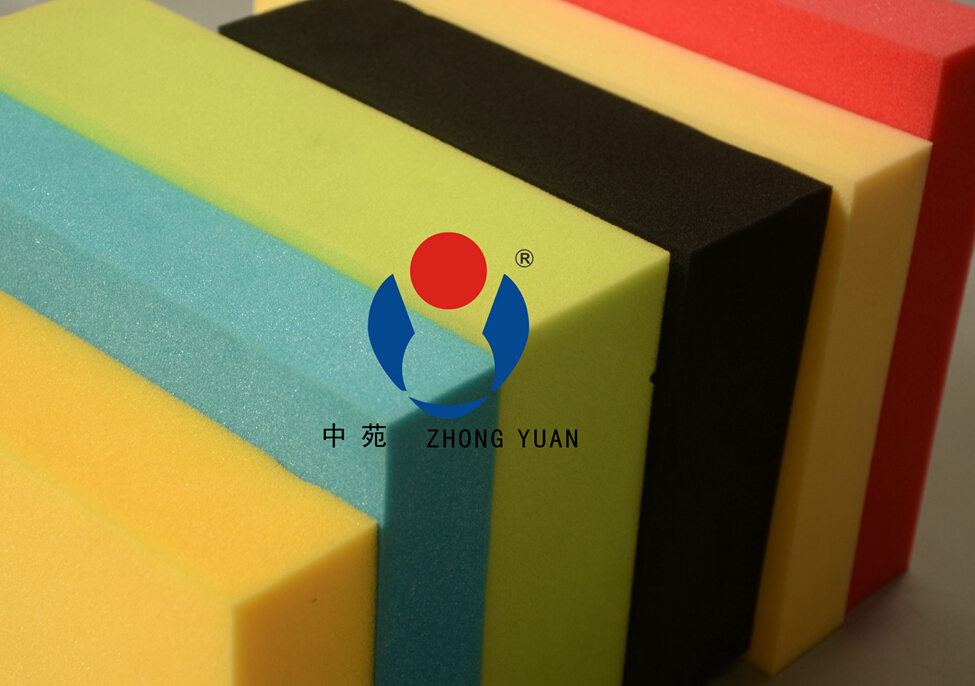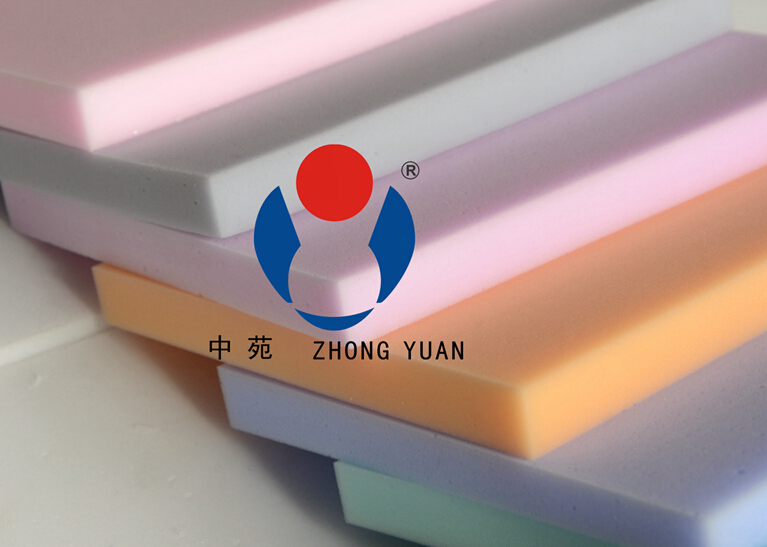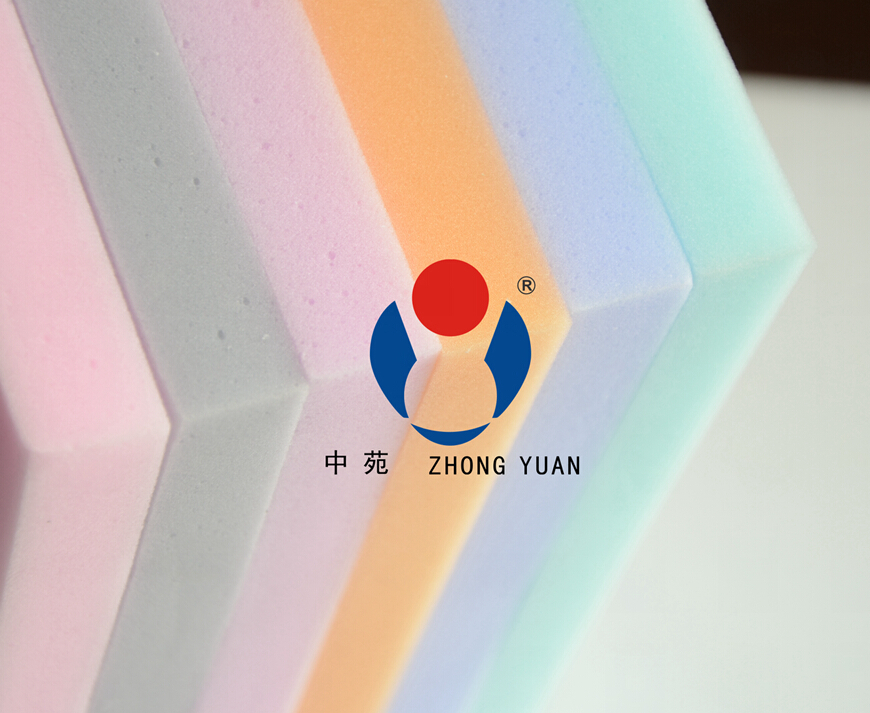
Sponge is a kind of polyurethane foam, which belongs to soft polyurethane foam. Because of the porous honeycomb structure, it has excellent softness, elasticity, water absorption and water resistance. It is widely used in sofa, mattress, clothing, soft packaging and other industries.

1、 Main raw materials
1.1 polyether polyol
Polyether propylene glycol and polyether glycerol are mostly used in sponge, which have low functionality (2-3), low hydroxyl value and high molecular weight. The molecular formula is:
1.2 organic isocyanate
There are two isomers, 2,4-TDI, 2,6-TDI. In sponge production, 2,4-TDI accounts for 80%, 2,6-TDI accounts for 20%
1.3 water
In sponge production, water is indispensable. Water reacts with TDI to release CO2 gas, which plays a role of chain growth.
1.4 catalyst
The catalysts to promote the reaction of polyether polyol and isocyanate to increase the chain are stannous octanoate and dibutyltin. The catalysts that can promote the cross-linking reaction and the reaction between isocyanate and water to release CO2 gas are triethanolamine, triethylenediamine, triethylamine, etc.
1.5 external foaming agent
It is commonly used as a low boiling point fluorohydrocarbon, such as trifluoromethane (F-11). Because it is not environmentally friendly, cyclopentane is generally used instead of F-11, or dichloromethane, with good results. If it is not for the production of extra light density sponge, the proportion of main raw materials can be adjusted appropriately, and external foaming agent is not used.
1.6 foam stabilizer
Foam stabilizer is commonly used as silicone foam stabilizer. At present, the silicon carbon bond Si-C copolymer is mainly used at 0.5%-5%.

2、 The synthetic principle of sponge
In the process of sponge synthesis, there are mainly chain growth reaction, foaming and crosslinking, which are related to the molecular structure, functionality and molecular weight of raw materials.
2.1 chain extension reaction
The chain extension reaction of isocyanate and polyether polyol with difunctional degree, because the isocyanate excess in the reaction is about 5%, the final product of chain extension is isocyanate group, which repeatedly promotes the chain growth rapidly.
2.2 foaming reaction with chain growth
In the process of sponge production, the foaming gas mainly comes from the reaction of TDI with water to generate a large amount of CO2 gas. At the same time, the newly formed amine reacts with isocyanate to generate urea bond compound, which is repeated with chain growth.
2.3 crosslinking reaction
Crosslinking reaction is very important for the preparation of sponge. If it occurs too early or too late, the quality of sponge will decline or even be discarded.
2.3.1 cross linking of multifunctional compounds
The reaction of polyether polyols with isocyanates directly affects the density of sponges. The molecular weight of crosslinking point is 2000-20000, the smaller the molecular weight, the greater the crosslinking density, the higher the hardness of foam, and the softness and elasticity decrease.
2.3.2 biuret crosslinking
Water reacts with isocyanate to form urea bond compound, and further reacts with isocyanate to form three-way structure biuret crosslinking compound.
2.3.3 cross linking of urea formate
The hydrogen on the nitrogen atom of the carbamate group reacts with the isocyanate to form a three-way cross-linked urea carbamate.

3、 Production process
At present, most of sponge production adopts one-step box foaming method. Under high-speed mixing, various raw materials are quickly added into the forming box to complete chain growth, foaming, crosslinking, curing and other reactions in the forming box, so as to complete sponge production. The process has the advantages of short process flow, low viscosity of materials, easy control, energy saving, small investment in equipment and wide range of application density.
Technology
It is divided into two components: component A, polyether polyol, water, amine catalyst, silicone oil, stirring and mixing for 20s. Component B, TDI, anti sintering agent, organic tin, 10s. A and B are mixed and stirred at high speed for 10s. They are quickly poured into the forming box. The white time in the mold is 6-8s, and the foaming time is about 1min. It can be cut to the required size after 2H and 24h ripening.
formula
| project | Number 1 | Number 2 | Number 3 |
| polyether | 100 | 100 | 100 |
| TDI | 51 | 37.5 | 51 |
| dichloromethane | 0 | 0 | 10 |
| water | 4 | 3 | 4 |
| silicone oil | 0.8 | 0.8 | 1 |
| Triethanolamine | 0.2 | 0.2 | 0.2 |
| Organotin | 0.24 | 0.2 | 0.2 |
| density | 26 | 30 | 21 |
------------------------------------------------------------------------------------------------------------------------------------------------------------------------------------------------------------------------------
